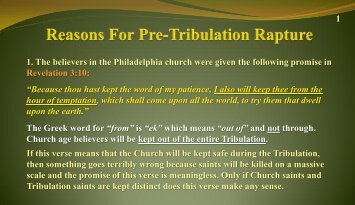Antagonists In The Church Pdf To Word
We assume that people in our congregations come into community to try and be our best selves together, and it can be jarring when that sometimes doesn't appear to be the case. In fact, it is often not the case! As this book describes, religious community can be a magnet for bad behavior because such behavior is often tolerated, in the name of peace and love, rather than confronted.I first read this book as a lay leader, and it immediately helped me and the leadership group I was working with bet We assume that people in our congregations come into community to try and be our best selves together, and it can be jarring when that sometimes doesn't appear to be the case. In fact, it is often not the case! As this book describes, religious community can be a magnet for bad behavior because such behavior is often tolerated, in the name of peace and love, rather than confronted.I first read this book as a lay leader, and it immediately helped me and the leadership group I was working with better identify some feelings of discomfort we were having with a new group member. Fortunately, this book provides concrete tips on how to handle a potential 'antagonist,' and we were able to head off what could have been some potential problems.What I appreciate about this book is that IT DOESN'T MATTER whether or not you know 'for sure' that someone is an antagonist.
Posting of weekly notes/handouts from Sunday morning study.

Diagnosis is not necessary. The advice for dealing with such a person (setting a definite meeting start and end time, for example) will not bother non-antagonists in the slightest. Most of the advice is simply a set of best practices for healthy boundaries.Non-Christian readers will not be interested in the alternating chapters that provide Biblical support for the rest of the book, but those parts are easy to skip and don't detract from the overall usefulness of the book. I'm not sure that I have encountered the type of antagonism Haugk describes, still, I wish I had read this book earlier in my ministry career. Haugk has given a great gift to Christian community with this writing. With the decline of cultural Christianity in the last 25 years, one wonders if the type of antagonism Haugk describes has diminished in the church. Regardless, this is a helpful read for clergy and all church leaders who are experiencing the frustration and fear that comes with dealing I'm not sure that I have encountered the type of antagonism Haugk describes, still, I wish I had read this book earlier in my ministry career.
Haugk has given a great gift to Christian community with this writing. With the decline of cultural Christianity in the last 25 years, one wonders if the type of antagonism Haugk describes has diminished in the church. Regardless, this is a helpful read for clergy and all church leaders who are experiencing the frustration and fear that comes with dealing with church antagonists.

Definition of an antagonist: someone who on the basis of non- substantive evidence, goes out of their way to make insatiable demands, usually attacking the person or performance of others; these attacks are selfish in nature, tear down rather than build up, and are frequently directed against leadership. 27)Kinds of antagonists: hard core (usually irrational, unreasonable). Major antagonist (possible to reason with them, but they will not be reasoned with). 28)Ability to Work WithLevel of ConflictObjectiveImpossible situationIntractableDestroy Opponent at any cost to them or meVery difficultFight/FlightHurt opponents or get rid of themToughContestsWin, put others in their placeEasyDisagreementsSelf-protectionEasiestProblem to solveWork out a solutionIdentifying Antagonists1. Is his/her behavior disruptive'2. Is the attack irrational'3. Does he/she go out of h/h way to initiate trouble'4.
Does h/s make insatiable demands'5. Are h/h concerns minimal or fabricated'6. Does h/s avoid causes that involve personal risk/suffering/sacrifice'7.
Antagonists In The Church Pdf
Does h/h motivation appear selfish'Red Flags To Watch For:1. Previous track record2. Parallel track record (antagonist at work, school, club, etc.)3. Nameless others: “At least 24 others feel this same way.”4. Criticism of predecessor5.
Instant buddy6. Gushing praise7. “I Gotcha!” Asks leading questions, tries to trap you.8. Extraordinary likeability9.
Church hopper10. Uses aggressive means: extreme, combative, unethical 12. Flashes $$$13. Takes notes at inappropriate times14. Sarcasm, cutting language15.
Different drummer, always doing things their own way16. A pestincessant phone calls, questions, etc.17. The “cause”Early Warning Signs:1. Chill in the relationship2. Honeyed “concerns”“Dear pastor, I have a concern about.” may mean “Im angry!!”3. Nettlesome questions4. Mobilizing forces, pot stirring5.
Meddling in others responsibilities6. ResistanceLater Warning Signs:1.
Misquoting scripture6. “Judas kissing”“Im your friend, but I have to say.”7. Letter writing (dont respond with a lengthy, reasoned answer)9. LobbyingPreventing Antagonism:1. Follow established policies2. Functional feedback channels3.
Antagonists In The Bible
Job descriptions4. Broad base of responsibility5.
Discipline that works6. Anticipatory socializationlet people know plans7. United front within leadershipRelating To Dormant Antagonists:1. Act professionally2.
Keep your distance3. Be accurate, dont guess, estimate4.

Avoid excessive positive reinforcement5. Tighten the reins6. Dont seek sympathy from others7. Dont form a committee to look into accusations, this only appears to give credibility to their charges8.
Dont call for a vote of confidencePublic Communication:Dont use public channels to combat antagonists. This only gives them attention and credibility.From “Antagonists in the Church,” by K.





